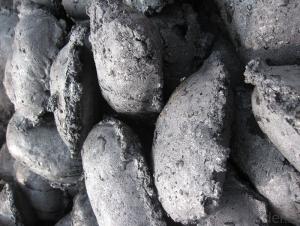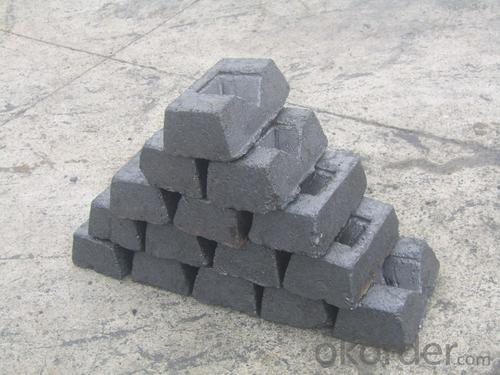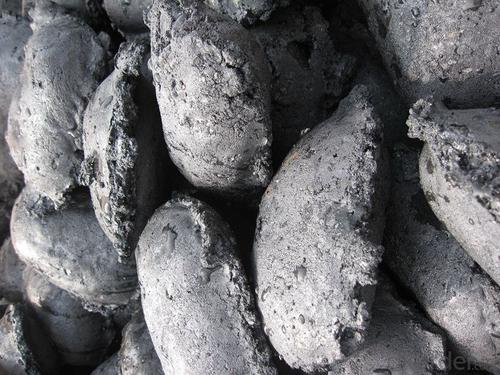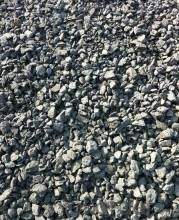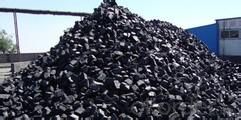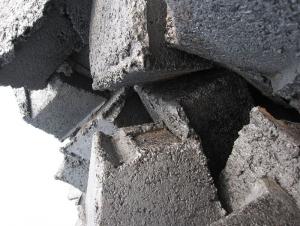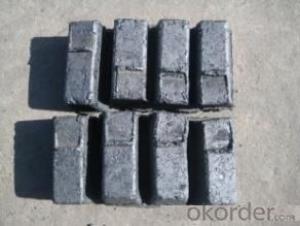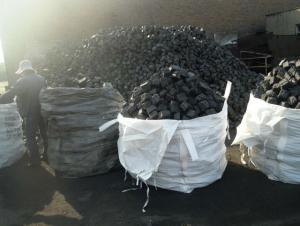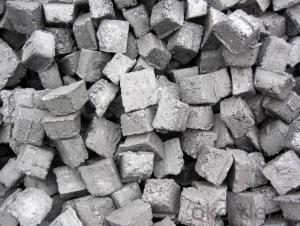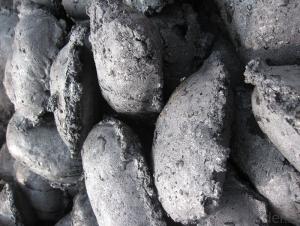Carbon Electrode Paste For Ferroallys' Production With Stable Quality
- Loading Port:
- Lianyungang
- Payment Terms:
- TT or LC
- Min Order Qty:
- 20 m.t.
- Supply Capability:
- 800 m.t./month
OKorder Service Pledge
OKorder Financial Service
You Might Also Like
Product Introduction
Carbon Electrode Paste is a self-baking electrode used in submerged arc furnaces for delivering power to the charge mix. Electrode Paste is added to the top of the electrode column in either cylindrical or briquette form. As the paste moves down the electrode column the temperature increase causes the paste to melt and subsequently bake forming a block of electrically conductive carbon. Electrode Paste is essentially a mix of Electrically Calcined Anthracite (ECA) or Calcined Petroleum Coke (CPC) with Coal Tar Pitch.
General Specification:
| PARAMETER UNIT GUARANTEE VALUE | ||||||
| Ash.( % ) | 4.0 max | 5.0 max | 6.0 max | 7.0 max | 9.0 max | 11.0 max |
| V.M (%) | 12.0-15.5 | 12.0-15.5 | 12.0-15.5 | 9.5-13.5 | 11.5-15.5 | 11.5-15.5 |
| Compress Strength. | 18.0 min | 17.0 min | 15.7 min | 19.6 min | 19.6 min | 19.6 min |
| Specific Resistance | 65 max | 68 max | 75 max | 80 max | 90 max | 90 max |
| Bulk Density | 1.38 min | 1.38 min | 1.38 min | 1.38 min | 1.38 min | 1.38 min |
Picture:
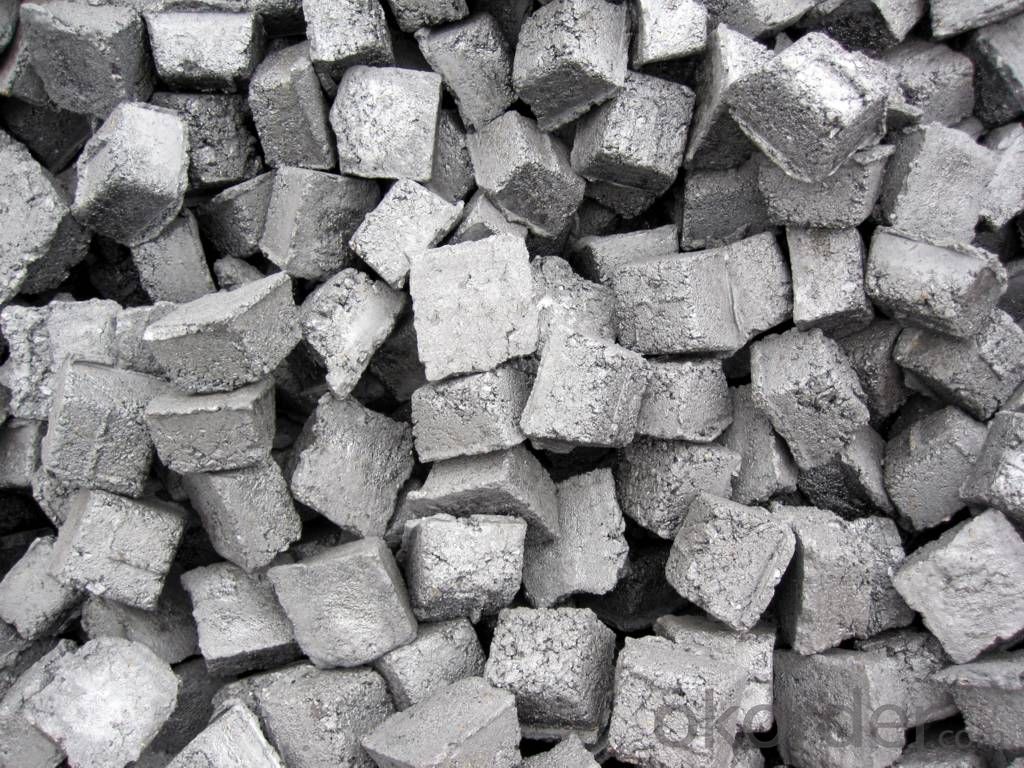
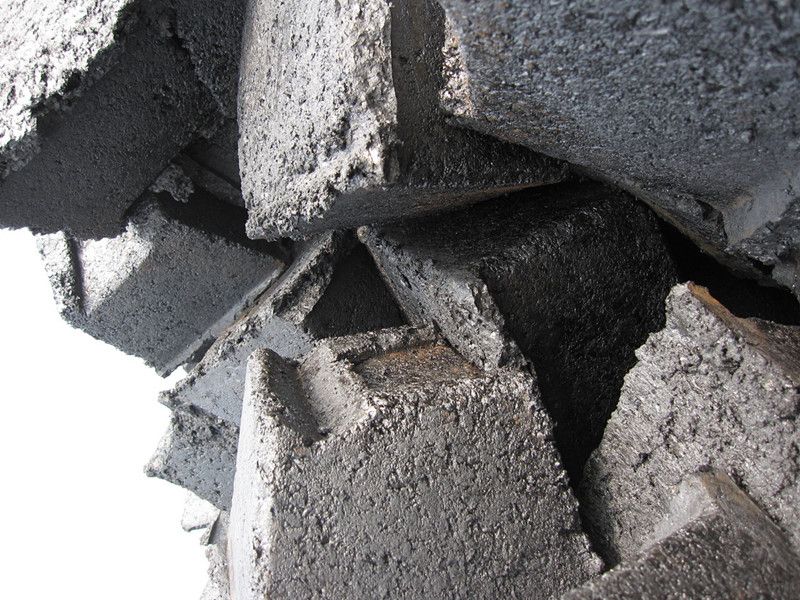
PACKAGE:
For Cylinder: two or four pieces are fixed into one pallet or as request
For Balls or lumps: in MT jumbo bags or as buyer's request
- Q: What are the properties of carbon fibers?
- Carbon fibers are known for their exceptional strength and stiffness, making them ideal for applications requiring high-performance materials. They possess a low density, corrosion resistance, and excellent thermal conductivity. Additionally, carbon fibers exhibit high resistance to fatigue and have a high tensile strength, allowing them to withstand extreme conditions. They are also chemically inert and have a low coefficient of thermal expansion, making them versatile for various industries such as aerospace, automotive, and sports equipment.
- Q: How is carbon used in the production of plastics?
- Plastics heavily rely on carbon, an indispensable ingredient, for their manufacturing. These polymers consist of extensive chains formed by repeating units, known as monomers. These monomers, in turn, consist of smaller molecules. Carbon atoms constitute a vital element in these monomers, serving as the foundation for the polymer chain. To acquire carbon for plastic production, diverse petroleum products, like crude oil and natural gas, are sourced. These fossil fuels contain hydrocarbons, which are organic compounds comprised of carbon and hydrogen atoms. Through a refining process called cracking, hydrocarbons are broken down into smaller molecules, including ethylene and propylene, which serve as the basic building blocks for numerous plastic types. Once these monomers are acquired, they are polymerized, meaning they are chemically bonded together to create lengthy chains. Carbon atoms play a critical role in this procedure, as they connect to shape the backbone structure of the polymer chain. The specific arrangement and bonding of carbon atoms dictate the properties of the resulting plastic, including its strength, flexibility, and durability. It is worth noting that while carbon is crucial, not all plastics are exclusively composed of this element. Other elements, such as oxygen, nitrogen, and chlorine, may be present in the monomers or introduced during production to enhance specific properties or introduce desired functionalities. All in all, carbon serves as a fundamental element in plastic production. It establishes the backbone structure, enabling the versatility and wide array of applications of plastic materials across various industries.
- Q: Does alumina react with carbon?
- NotThe smelting of Al in industry can only be done by electrolysis. Even at high temperatures, the reducibility of C is not as strong as Al, and the melting point of Al2O3 is very high. At this temperature, C has been gasified
- Q: What are the limitations of carbon dating?
- One limitation of carbon dating is that it can only be used to date organic materials up to around 50,000 years old. Additionally, the dating method can be affected by contamination or mixing of materials, which can lead to inaccurate results. Furthermore, carbon dating relies on the assumption that the atmospheric concentration of carbon-14 has remained constant over time, which is not always the case. Finally, carbon dating is not suitable for dating objects that do not contain carbon, such as rocks or minerals.
- Q: How is carbon used in the manufacturing of electronics?
- Carbon is used in several ways in the manufacturing of electronics. One of the primary uses of carbon in electronics is as a key component in the production of carbon nanotubes. These nanotubes have exceptional electrical conductivity and mechanical strength, making them ideal for use in various electronic devices. For instance, carbon nanotubes can be used to create high-performance transistors, which are essential components in computer chips. Additionally, carbon is utilized in the manufacturing of batteries for electronic devices. Carbon-based materials, such as graphite, are commonly used as the anode material in lithium-ion batteries. This is because graphite can store and release lithium ions efficiently, allowing for the rechargeable nature of these batteries. Furthermore, carbon is employed in the production of conductive coatings and inks used for printed circuit boards (PCBs). Carbon-based materials, such as carbon black or carbon nanotubes, are added to these coatings and inks to enhance their electrical conductivity. This enables the proper flow of electrical signals throughout the circuitry of electronic devices. In summary, carbon plays a crucial role in the manufacturing of electronics. It is used in the production of carbon nanotubes for high-performance transistors, as anode material in lithium-ion batteries, and in conductive coatings and inks for printed circuit boards. These applications highlight the versatility and importance of carbon in the electronics industry.
- Q: There are ten carbon and oil Gulu chorus, carbon English Gollum and finally he said to sing, this is English this is the song of English is what?
- It's BAD AND NITHTDuring Halloween last year, many people joined in the chorusThe English sounds are are, you, ready and where you goingBecause the pronunciation and intonation is very interesting, so has been Tucao
- Q: What is carbon offsetting in the energy sector?
- Carbon offsetting in the energy sector refers to the practice of compensating for the greenhouse gas emissions produced by energy generation and consumption activities. It involves investing in projects or initiatives that reduce or remove carbon dioxide (CO2) or other greenhouse gas emissions from the atmosphere, with the aim of balancing out the emissions being released into the atmosphere. The energy sector is a significant contributor to global greenhouse gas emissions, particularly through the burning of fossil fuels such as coal, oil, and natural gas. Carbon offsetting in this sector aims to mitigate the environmental impact of these emissions by funding projects that promote renewable energy, energy efficiency, and other carbon reduction measures. There are various types of projects that can be supported through carbon offsetting in the energy sector. For example, investments can be made in renewable energy projects like wind farms, solar power plants, or hydropower facilities, which generate clean energy without emitting greenhouse gases. These projects help to displace fossil fuel-based energy sources, reducing overall emissions from the energy sector. Additionally, energy efficiency projects can be supported through carbon offsetting. These initiatives focus on reducing energy consumption by implementing energy-efficient technologies, improving insulation, or optimizing industrial processes. By reducing the amount of energy needed, these projects indirectly lead to lower greenhouse gas emissions. Furthermore, carbon offsetting in the energy sector can also involve the support of initiatives that remove carbon dioxide from the atmosphere. These projects often include reforestation or afforestation efforts, which involve planting trees or restoring degraded forests. Trees absorb and store carbon dioxide through photosynthesis, helping to offset emissions and counteract climate change. Overall, carbon offsetting in the energy sector plays a crucial role in transitioning to a more sustainable and low-carbon future. By investing in projects that reduce or remove greenhouse gas emissions, it allows individuals, organizations, and governments to take responsibility for their carbon footprint and contribute to global efforts in combating climate change.
- Q: What are carbon-based superconductors?
- Carbon-based superconductors are materials that exhibit superconductivity, which is the ability to conduct electricity with zero resistance, at relatively high temperatures, using carbon as the main component. These materials have unique properties that make them promising candidates for various technological applications, such as energy storage and transmission systems.
- Q: What is the structure of carbon-based polymers?
- Carbon-based polymers have a repeating chain-like structure, where carbon atoms are bonded together to form the backbone of the polymer. These carbon atoms are typically covalently bonded to other atoms or groups of atoms, such as hydrogen, oxygen, nitrogen, or halogens. The arrangement of these atoms and their connectivity determines the properties of the polymer. In addition to the carbon backbone, carbon-based polymers often contain functional groups, which are specific combinations of atoms that can impart unique chemical properties to the polymer. These functional groups can be attached to the carbon backbone at various points along the chain, introducing chemical diversity and modifying the polymer's behavior. The repeating units in carbon-based polymers, known as monomers, can vary in size and complexity. For example, simple hydrocarbons like ethylene can polymerize to form polyethylene, which consists of a long chain of carbon atoms with hydrogen atoms attached. On the other hand, more complex monomers, such as acrylonitrile or styrene, can be used to create polymers like polyacrylonitrile or polystyrene, respectively. These polymers incorporate additional atoms or functional groups, leading to different properties and applications. Overall, the structure of carbon-based polymers is highly diverse and can be tailored to meet specific requirements, making them versatile materials used in a wide range of industries, including plastics, textiles, and electronics.
- Q: What are the uses of carbon black?
- Carbon black has a wide range of uses across various industries due to its unique properties. One of the primary uses of carbon black is as a reinforcing filler in rubber materials. It improves the strength, durability, and resistance to wear and tear of rubber products, making them suitable for applications such as tires, conveyor belts, gaskets, hoses, and shoe soles. Carbon black is also used as a pigment in inks, coatings, and dyes. Its high tinting strength and ability to absorb ultraviolet light make it an excellent choice for coloring plastics, paints, and printing inks. Additionally, carbon black is used in toners for photocopiers and laser printers, providing the dark color required for high-quality printing. Furthermore, carbon black finds applications in the manufacturing of electrodes for batteries and fuel cells. Its electrical conductivity and high surface area make it an ideal material for enhancing the performance and efficiency of energy storage devices. Carbon black is also used in the production of carbon brushes, which are crucial components in electric motors and generators. In the construction industry, carbon black is utilized as a filler in concrete and asphalt to enhance their strength and durability. It improves the resistance to weathering, reduces cracking, and increases the lifespan of these materials. Additionally, carbon black is employed in the production of conductive polymers used for static dissipation and electromagnetic shielding in various construction materials. In summary, the uses of carbon black are diverse and span across multiple industries. From reinforcing rubber products to coloring inks and coatings, enhancing energy storage devices, and improving the strength of construction materials, carbon black plays a vital role in enhancing the performance and durability of various products.
Send your message to us
Carbon Electrode Paste For Ferroallys' Production With Stable Quality
- Loading Port:
- Lianyungang
- Payment Terms:
- TT or LC
- Min Order Qty:
- 20 m.t.
- Supply Capability:
- 800 m.t./month
OKorder Service Pledge
OKorder Financial Service
Similar products
Hot products
Hot Searches

